Addressing an issue like malnutrition calls for partnerships at different levels. In this Good Practice Note, Debasis Mohapatra, illustrates how different organizations brought complementary expertise and knowledge to address malnutrition in Odisha.
CONTEXT
Fighting malnutrition, particularly among children and women, remains a major concern and priority for the State Government of Odisha, India. In recent years, there has been some significant improvements in a few of the health and nutrition indicators of the state. For instance, the Infant Mortality Rates (IMR) declined from 65 to 40, and rates of stunting among children under five years of age fell from 45 to 34.1%. However, the incidence of child wasting increased from 19.6 to 20.4%, and the rate of women with anemia rose from 51 to 61.1%, between 2005-06 and 2015-16. [1] In Odisha about 34.4% of children under five are underweight.
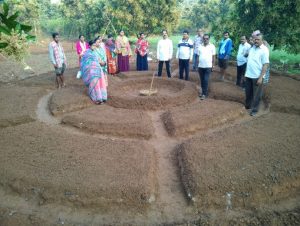
Demonstration of Model Nutrition Garden
PUBLIC PRIVATE PARTNERSHIP
To address the alarming nutritional status of women and children in the State, the Odisha Livelihood Mission (OLM) (http://olm.nic.in/) under the aegis of the Panchayati Raj and Drinking water Department (PR&DW), Government of Odisha, entered into a partnership with the Azim Premji Philanthropic Initiatives (APPI) (https://www.azimpremjiphilanthropicinitiatives.org/who-we-work-with). The initiative focused on empowering women SHGs, for the purpose of growing safe, diverse and nutritious fruits and vegetables using non-chemical methods and local seeds and saplings. A clear strategy was developed for improving household consumption by monitoring the food intake of lactating and pregnant women, adolescent girls, and children. This partnership is expected to reach 750,000 households by June 2021 by mobilizing communities for nutrition garden, backyard poultry and goat rearing. These activities are increasingly being accepted by the community.
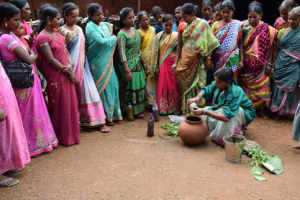
Training on Compost making
Pilot phase
During 2014-2016, Azim Premji Philanthropic Initiatives executed a partnership with Living Farms, a local NGO to mobilize communities in two districts of Odisha for establishing individual nutrition gardens in their backyards so that they could grow and consume fruits, vegetables, eggs and meat. This is to ensure dietary diversity through the intake of vegetable and animal protein that can prevent malnutrition among children, adolescent girls, pregnant women and lactating mothers. Living Farms (http://living-farms.org/), carried out a pilot during 2014-2016 in two severely-affected districts of Odisha – Kalahandi and Raygada – with high malnutrition levels. A post-project evaluation by Valid International (Oxford, UK) revealed a very positive result with regard to reducing malnutrition. [2]
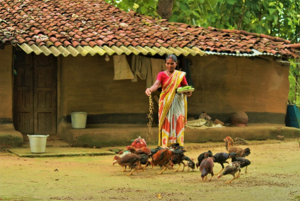
Homemade feed being given to poultry
Scaling up
Next, APPI started a dialogue with the Government of Odisha to work on a large scale across Odisha. APPI went for partnerships with resource NGOs (RNGOs), for example Living Farm, PRADAN (www.pradan.net) and Harsha Trust (http://www.harshatrust.org/), to build the confidence of communities so as to establish nutrition gardens, as well as poultry and goat rearing in the backyards of targeted households. APPI also supported OLM on a 3-year project to establish a nutrition vertical at state and district levels to streamline and mainstream nutrition-sensitive activities, technically supported by RNGOs. Hence, OLM got support for 7 member state level nutrition team and 90 district level nutrition teams from APPI, and engaged its community cadres (Krushi Mitra, Prani Mitra and Community Resource Persons) present at village/Gram Panchayat level for rolling out nutrition gardens, as well as poultry and goat rearing activities at village or community level. The OLM’s entire state and district staff were initially sensitized and trained by Resource NGOs, subsequently a team of 240 master trainers were again groomed by RNGOs for training the 9000 community cadres spread across Odisha.
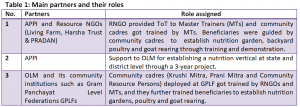
The affirmative experience gained by resource NGOs from establishing nutrition gardens, poultry and goat rearing activities in the backyards of households were captured initially to develop a set of eight training materials in the local Odia language jointly by RNGOs and APPI. RNGOs were further given grant support by APPI to deliver training and to demonstrate all models of nutrition garden and livestock activities through deployment of technically trained and experienced resource persons (at 47 blocks in 13 districts) for direct support to community cadres and communities. These block-level resource persons (BLRPs) are placed at the 47 blocks along with the other block management team of OLM for supporting the project on technical aspects round the year. For impacting a larger population and covering a wider geography, 60 additional blocks were identified for providing indirect support by resource NGOs. So RNGOs mobilized more resource persons and deployed them at 3 days/block for supporting the OLM teams to conduct the same activities through a lighter extension approach. A MIS specific to the Nutrition project is planned that will be built upon the existing MIS of OLM so as to capture the nutrition garden and livestock activities as well as consumption by intended/targeted category of households. A six-monthly concurrent evaluation by a third party (Oxford Policy Research) is also planned that will measure the impact of project activities and make necessary mid-course corrections (if any).
LESSONS LEARNT
One of the major lessons learnt from the project is about the potential role of the government in scaling up nutrition-sensitive interventions and if it can be supported through training and capacity building by RNGOs. The role of knowledge partners need to be recognized and rewarded.
Another major lesson understood is the need for investments on capacity development of communities through the development of a cadre of community extension agents as this is essential for sustainability of such a community-driven initiative. Adult learning methods, such as storytelling, case study presentation, etc., are part of Participatory Learning Action linking agriculture and natural resources to Nutrition (PLA LANN). This tool is used by community cadres at SHG-level meetings for supporting/creating demand for nutrition garden, backyard poultry and goat rearing. PLA LANN has made the project activity process easier to learn and use by the community. PLA LANN was observed to have good acceptability among communities in explaining the root cause of malnutrition and its solution.
Apart from these, the government staff need a lot of handholding support for at least 3-5 years for implementing a project on addressing nutrition in order to achieve the desired/expected result. Government agencies are capable of delivering such an initiative on a large scale if the key people in the system agrees to periodic desk and field reviews.
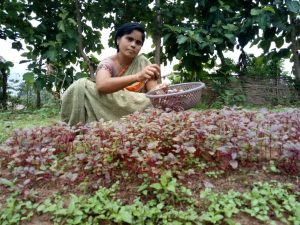
Harvesting of green vegetables by a woman
IMPACT
After the MoU was signed in June 2018 between the Government of Odisha and APPI, the Nutrition Project actually started in November 2018, after the state team members joined OLM.
By the end of kharif 2019 (September 2019), 30,000 households had started establishing nutrition gardens in all districts of Odisha. By the end of rabi season (December 2019), at least 100,000 households are expected to establish nutrition gardens.
OLM had conducted an internal rapid survey with community cadres and staff of Resource NGOs in September 2019 and captured 16,500 pictures of nutrition gardens, along with geotagging of the fields of beneficiaries using the ODK [3] app. An impact study led by Oxford Policy Management group is currently underway, and it is expected to come up with clear results on the impact of this project on addressing malnutrition.
Women happy with vegetable production
END NOTE
The need of the hour is to strengthen community-driven extension so that the end beneficiary gets access to quality extension services at an affordable price. The model of converting community resource persons into para professionals to deliver extension services has proven to be successful. But to sustain this provision of extension support, the community needs to be encouraged to share some costs of this service. In the case of community animal health workers providing vaccination, artificial insemination and allied services, the community is already paying service charges, and this supports community workers in sustaining their livelihood. But in the case of other agricultural support interventions, the beneficiaries are not yet ready to pay the service charges, as it is provided free by government agencies. So this issue needs to be resolved by arriving at a consensus among all the stakeholders as well as through policy interventions at the highest level.
References
[1] http://rchiips.org/NFHS/pdf/NFHS4/OR_FactSheet.pdf
[2]Valid International conducted an impact evaluation to assess the magnitude of change through baseline (May 2017) and endline surveys (June 2019) in five project blocks and five control blocks of Raygada district. The study incorporated a range of KAP indicators, information on nutrition-sensitive agriculture and use of uncultivated food sources, as well as the key indicators of maternal dietary diversity, infant and young child feeding (IYCF) practices, and nutrition outcomes measured by anthropometric status. Both maternal and child dietary diversity showed statistically significant impact (+8% points and +11% points over change in controls, respectively). Minimum dietary diversity for women exceeded the target by one percentage point while child dietary diversity fell slightly short of the target. Change in wasting and severe wasting was not statistically significant over that experienced by children in control blocks.
[3] ODK (Open Data Kit) Collect is an app available on the playstore of Android phones and it is a replacement for paper forms – with support for geo-locations, images, audio clips, video clips and barcodes, as well as numerical and textual answers. It also supports groups of repetitive questions and data collection in multiple languages.
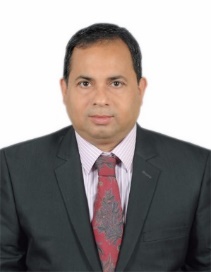
Debasis Mohapatra is a graduate in Agriculture from Orissa University of Agriculture and Technology, Bhubaneswar; and a postgraduate in Rural Management from the Xavier Institute of Management, Bhubaneswar. At present he is working as Team leader-cum-State Project Manager, Nutrition Project of the Odisha Livelihood Mission (mohapatra.debasis@gmail.com).

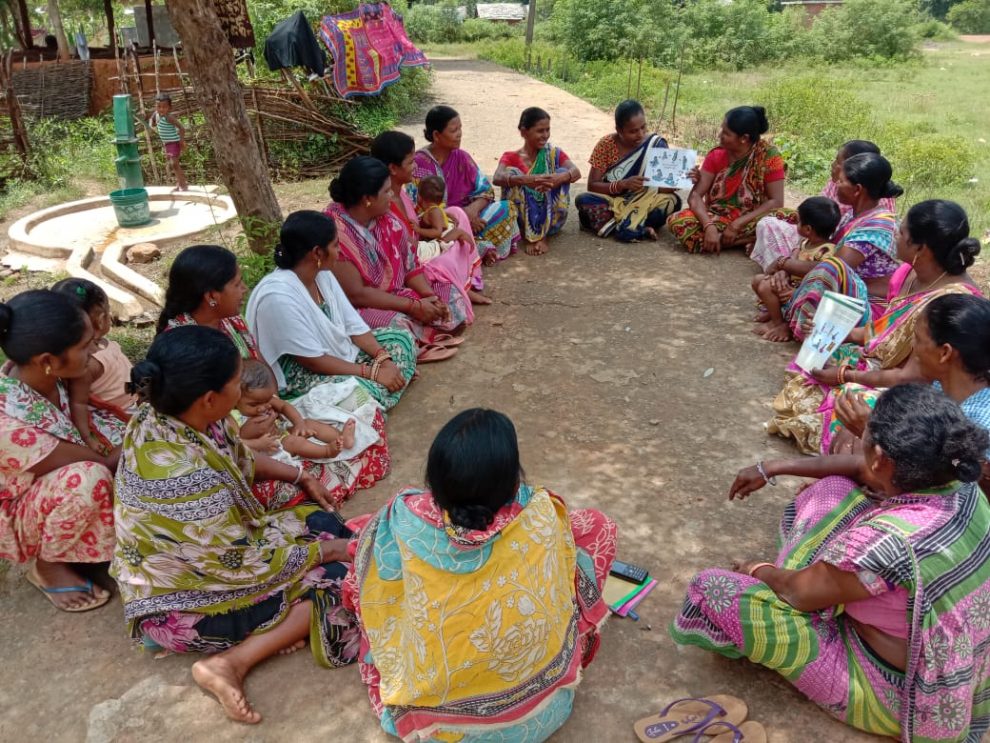
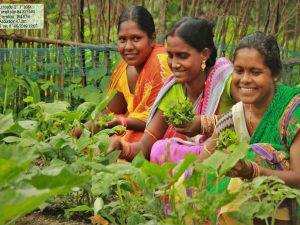

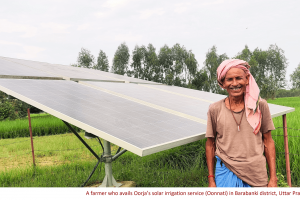
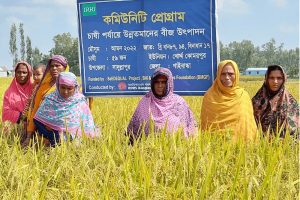
Women Malnutrition and planned Green kitchen Garden Poultry And Chicken rearing activists to reduce malnutrition good Inciatative.I am ngo working organic Kitchen gardening for rural women and Tribal women need support and partnership
I appreciate the efforts of the Govt of Odisha in partnership with NGOs in addressing the perennial problem of malnutrition in women and Children in Odisha. Although it is good to aim at sustainability, I wish projects like this need to be promoted even at the cost of Govt. for the simple reason that poor women and children ( who are otherwise deprived ) will get the benefit. Malnutrition especially in women and children must be addressed through improved nutrition to prevent them from suffering with several physical and mental health issues. Both govt and individuals – patients) spend a lot ( time and money ) to treat people suffering with malnutrition and its related ailments. Anyhow, the Govts. both at the Centre and States are spending crores on several schemes with little or no impact on health of the poor people. By spending few crores on under nourished people known for their high levels of malnutrition Odisha ( any state) or India is not going to be poor. Thanks to the author Debasis Mohapatra for sharing his experiences and to AESA for posting it.